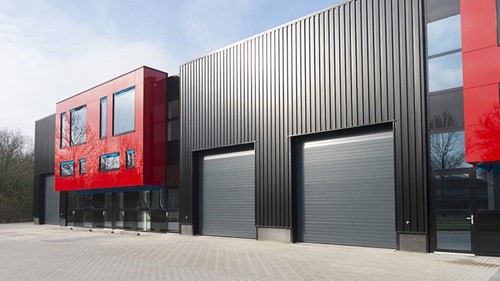Resilient investors drive demand for Sydney, Melbourne offices
Investor demand for prime office properties in Sydney and Melbourne remains robust, despite lengthy lockdowns and increasing uncertainty about how office markets will emerge from the pandemic.
Investor demand for prime office properties in Sydney and Melbourne remains robust, despite lengthy lockdowns and increasing uncertainty about how office markets will emerge from the pandemic.
Research released this week by Knight Frank showed there had been a strong list in investor sentiment towards office properties, driven by Australia's faster than expected economic recovery.
As a result, investment volumes are expected to rise to around $15 billion by the end of 2021, well in excess of the $11.4 billion of office transactions worth over $10 million recorded last year.
Knight Frank said there had been $9.8 billion worth of office property transactions so far in 2021.
In Sydney, the report found leasing volumes to date were 125 per cent higher than at the same time last year, a reflection of the strong economic momentum that built in the first half of the year.
Face rents are holding firm at $1,189/sqm in the Harbour City, while prime incentives average 32 per cent, resulting in net effective rents declining by 10 per cent year on year.
“As sentiment and demand look likely to improve on the back of the vaccination roll-out, incentives will likely peak at year end and then begin to pull back slowly,” Knight Frank chief economist Ben Burston said.
Sublease vacancy and backfill space will still place pressure on effective rents in the near term and will still see landlords offer additional inducements to prospective tenants, such as early access and contribution to fitouts.”
Against that backdrop, investors are showing optimism, with $2.3 billion in transactions to date in 2021 well above the $900 million in office sales recorded over the same period last year.
Mr Burston said that increase in transaction volume suggested investors were becoming more confident around their prospects for growth post-pandemic.
“The uptick in activity reveals two key drivers,” Mr Burston said.
“The first is the earlier than expected recovery in the economy and the handling of the virus prior to the current strict lockdown measures underway in Sydney.
“While the landscape has introduced a level of uncertainty that did not exist before March 2020, the rebound boosted confidence levels to the point where investors were starting to break through the COVID-led inertia to gain momentum not seen for 12 months.
“Sellers in particular showed increased confidence that they would achieve strong pricing and were more prepared to go to market in the first half of 2021, relative to 2020.
“The second driver is the investor response above the pre-pandemic average, which signifies there is a large amount of pent-up capital waiting to be deployed following the uncertainty of 2020.
“Given greater confidence and the prospect of economic recovery next year, this will underpin a busy period with more assets coming to market.”
Meanwhile in Melbourne, office markets are expected to follow the state’s wider economic recovery in line with the acceleration of Australia’s vaccine rollout.
But at the same time, CBD office vacancies continue to rise, rising from 8.4 per cent in January to 10.4 per cent in July.
Office vacancies prior to the pandemic in January 2020 were just 3.2 per cent in Melbourne.
Sub-lease vacancy almost doubled over the last six months, with the 119,717sqm of sub-lease space available the highest recorded for Melbourne’s CBD since 1994.
Transactions are down as compared to the first half of the year, but offshore demand remains strong and pent-up demand suggests a rebound is likely in the months ahead, Mr Burston said.
“While demand for offices more broadly is down, there is evidence that the recovery in the leasing market commenced in late 2020/early 2021 and that this recovery was being driven by the sub-500sqm market,” Mr Burston said.
“Knight Frank research reports that the number of sub-500sqm deals in H1 2021 had almost surpassed the total number recorded in 2020, and the average size of new leases in H1 2021 was 1,978sqm, which is noticeably below the levels recorded in H2 2020.
“Anecdotally, we can report that many large corporates are still weighing up their office accommodation decisions, while a marked rise in incentives, greater flexibility in leasing arrangements behind offered and a need to downsize has seen smaller businesses commit to new leases.”




















